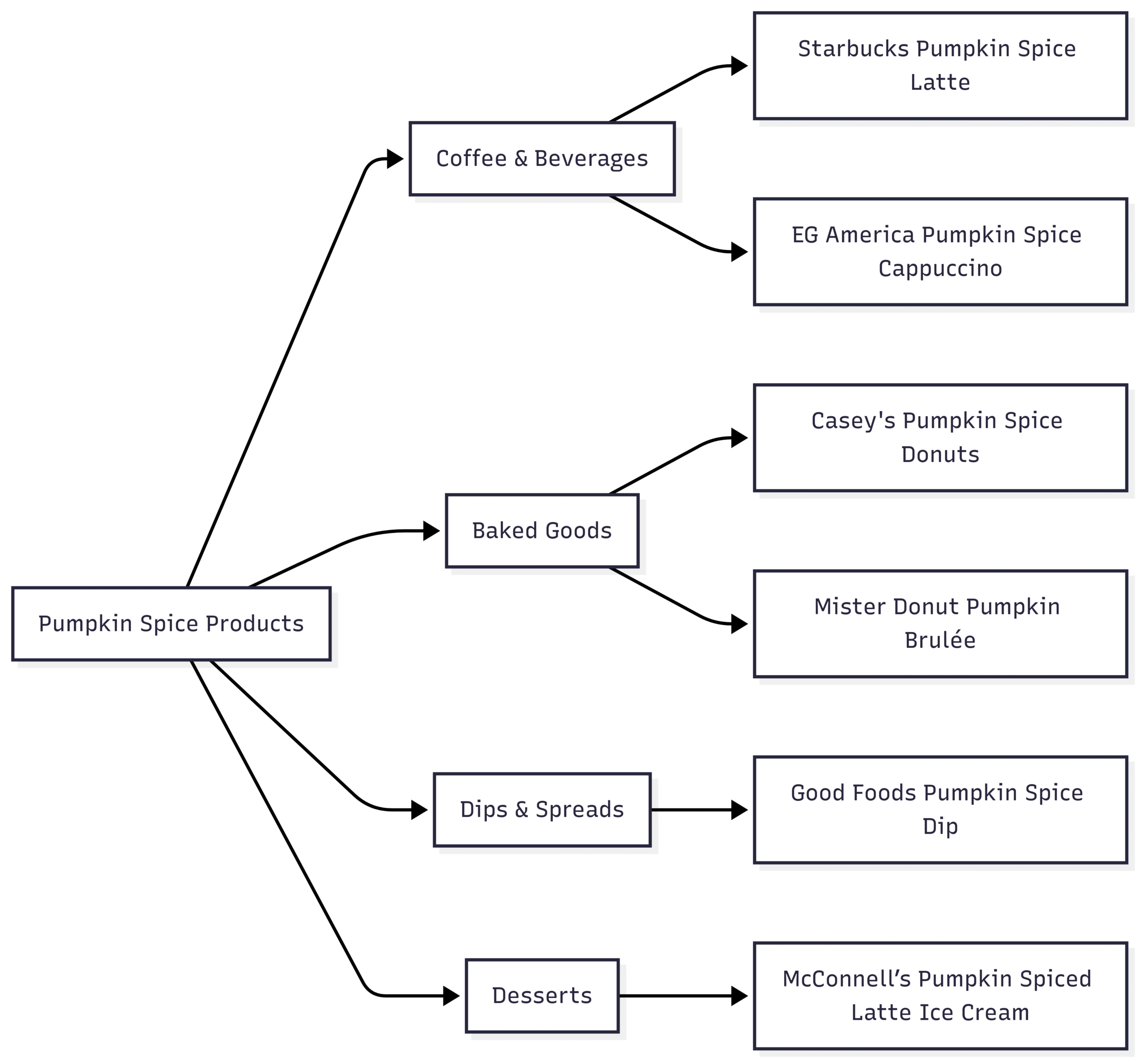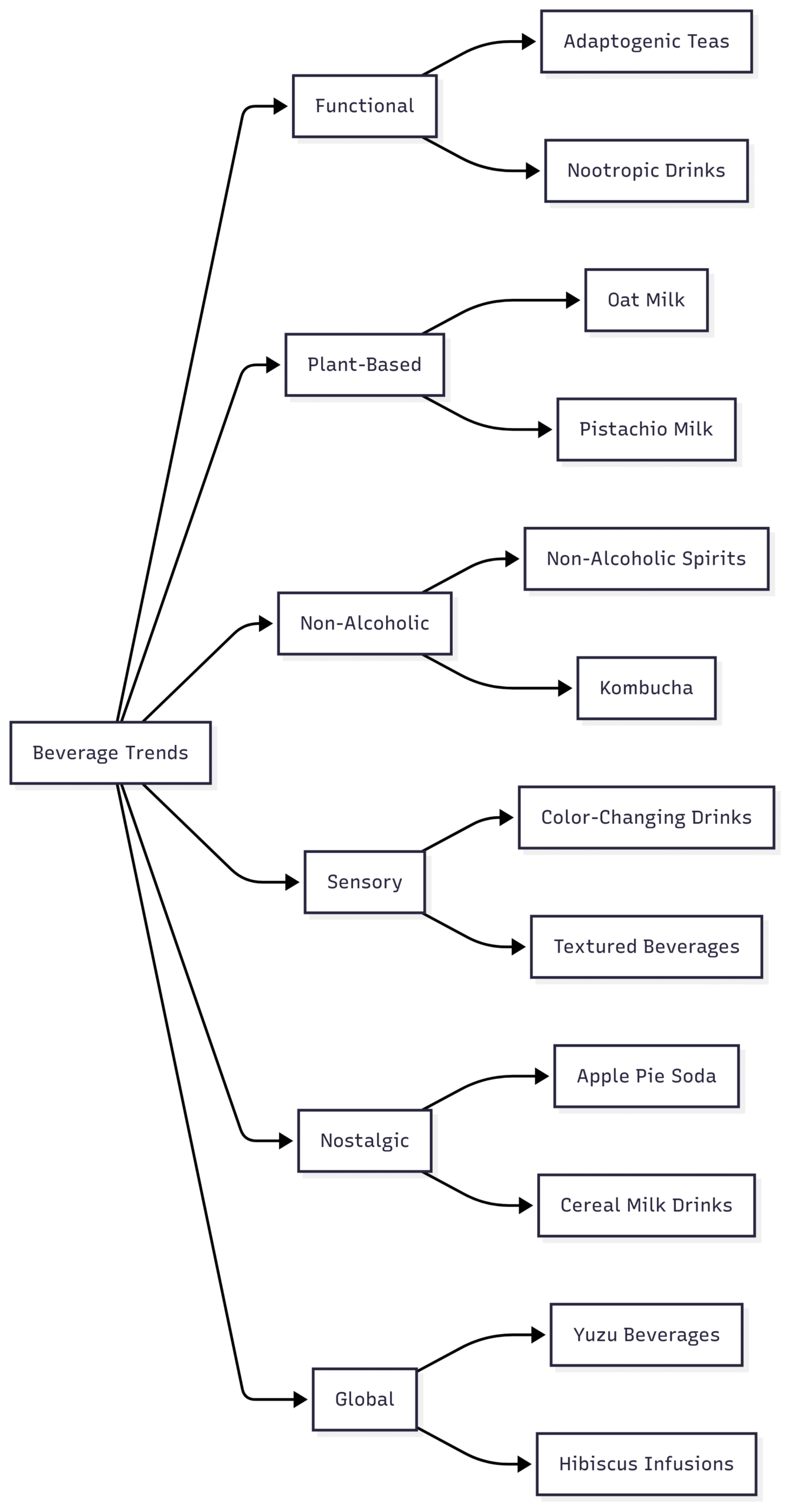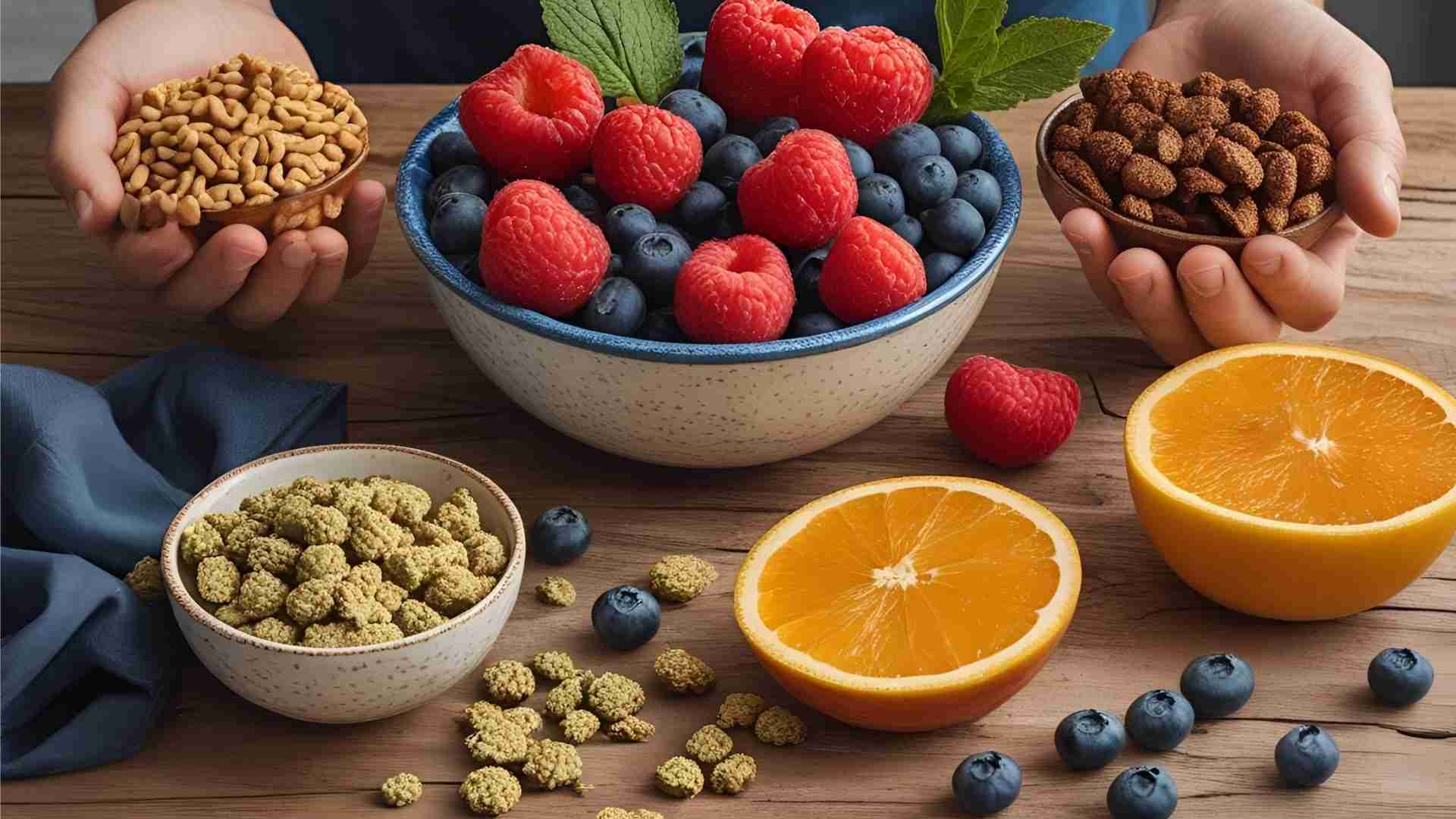Food Content Trends in September
Discover September food trends: seasonal apples, pumpkin spice, global flavors, and sustainable dining. Explore comfort foods, plant-based options, and more.
As the seasons shift from summer to fall, September brings a vibrant array of food trends that reflect the changing weather, cultural influences, and evolving consumer preferences. This month, the culinary landscape is defined by a harmonious blend of seasonal ingredients, nostalgic comfort foods, bold global flavors, and a strong emphasis on health and sustainability. From apple-centric dishes to pumpkin spice everything, innovative collaborations, and eco-conscious eating, September’s food trends offer something for everyone. This article explores the key trends shaping the food and beverage industry, providing insights for food enthusiasts, home cooks, and industry professionals alike.
Seasonal Ingredients Take Center Stage
September marks the transition to autumn, bringing an abundance of seasonal produce that inspires both home kitchens and restaurant menus. Apples, pumpkins, pears, zucchini, and root vegetables dominate markets, offering fresh, flavorful ingredients that align with the cooling weather.
Apples: The Star of the Season
Apples are at their peak in September, with varieties like Honeycrisp, Granny Smith, and Gala flooding local markets. Their versatility makes them a favorite for both sweet and savory dishes. From classic apple pies and crisps to savory options like apple-stuffed pork chops or apple and cheddar salads, this fruit is a cornerstone of fall cuisine. According to Google Trends, searches for apple recipes spike in September, reflecting consumer enthusiasm for this seasonal staple.
Recipe Idea: Apple-Cinnamon Breakfast Muffins
- Ingredients: 2 cups all-purpose flour, 1 tsp baking powder, 1 tsp cinnamon, 1/2 tsp salt, 1/2 cup unsalted butter (melted), 3/4 cup brown sugar, 2 large eggs, 1 tsp vanilla extract, 1/2 cup milk, 1 1/2 cups diced apples (Honeycrisp or Granny Smith).
- Instructions: Preheat oven to 375°F (190°C). Mix dry ingredients (flour, baking powder, cinnamon, salt). In a separate bowl, combine melted butter, sugar, eggs, vanilla, and milk. Fold in diced apples. Combine wet and dry ingredients, then spoon into a muffin tin. Bake for 20-25 minutes until golden. Makes 12 muffins.
This recipe is perfect for busy mornings or as an after-school snack, combining the nostalgic flavors of apple and cinnamon with the convenience of a portable treat.
Pumpkins and Pumpkin Spice: The Fall Classic
Pumpkin spice continues to reign supreme in September, with a 24.1% surge in foot traffic at Starbucks on the day its pumpkin spice menu launches, according to industry data. This flavor, encompassing cinnamon, nutmeg, cloves, and ginger, appears in lattes, donuts, ice creams, and even savory dishes like pumpkin risotto. Brands like Good Foods have introduced Pumpkin Spice dips, while McConnell’s offers Pumpkin Spiced Latte ice cream, showcasing the flavor’s versatility.
Chart: Top Pumpkin Spice Products in September

Root Vegetables and Squash: Hearty Fall Staples
As temperatures drop, hearty dishes featuring root vegetables (carrots, parsnips, turnips) and squash (butternut, acorn) gain popularity. These ingredients shine in comforting stews, roasts, and casseroles, offering warmth and nutrition. For example, a roasted butternut squash soup with sage and cream is a cozy, budget-friendly option for weeknight dinners.
Comfort Foods for Cozy Evenings
The cooler September weather sparks a craving for comfort foods that evoke warmth and nostalgia. From slow-cooker recipes to indulgent casseroles, these dishes provide a “hug in a bowl” feeling, as noted by food bloggers.
Crockpot and One-Pot Meals
Crockpot recipes see a significant uptick in September, according to Food Blogger Pro, as busy families seek convenient, hands-off meals. Slow-cooker chili, pot roasts, and creamy chicken casseroles are popular choices. Instant Pot recipes also gain traction, offering quick alternatives for time-pressed cooks.
Recipe Idea: Slow-Cooker Beef and Root Vegetable Stew
- Ingredients: 2 lbs beef chuck (cubed), 4 carrots (sliced), 2 parsnips (sliced), 1 onion (diced), 2 cloves garlic (minced), 4 cups beef broth, 1 cup red wine, 2 tbsp tomato paste, 1 tsp thyme, 1 tsp rosemary, salt, and pepper.
- Instructions: Place all ingredients in a slow cooker. Cook on low for 8 hours or high for 4 hours until beef is tender. Serves 6.
Nostalgic “Newstalgia” Dining
Nostalgia plays a significant role in September’s food trends, with a modern twist dubbed “newstalgia.” This trend blends familiar flavors with innovative presentations. For example, Chartwells Higher Education’s Supper Club on college campuses reimagines classic dishes like meatloaf with gourmet ingredients, such as truffle-infused mashed potatoes. Similarly, Munchies has reintroduced retro flavors like Tangy Ketchup and Old School BBQ after a 20-year hiatus, appealing to Gen Z’s love for nostalgic yet fresh experiences.
Global Flavors and Culinary Exploration
September sees a surge in global flavors, driven by younger consumers’ adventurous palates and social media’s influence, particularly on platforms like TikTok. Exotic ingredients like yuzu, gochujang, and za’atar are becoming mainstream, blending with traditional flavors to create exciting hybrids.
East Asian Influences
Miso, a fermented soybean paste, is a standout ingredient, adding umami depth to soups, marinades, and even desserts. Chartwells reports dishes like Miso Spiced Caramel Pork Skewers and Matcha Miso Caramel Cookies on college campuses. SPAM’s Gochujang-flavored variety reflects Korean cuisine’s growing influence, while Mister Donut in Japan offers chestnut and sweet potato donuts, showcasing regional innovation.
Latin American and Middle Eastern Flavors
Latin American flavors like chamoy, mole, and guava are trending, with chamoy pickles gaining viral status on TikTok for their sweet-spicy profile. Middle Eastern ingredients like za’atar and tahini appear in snacks and dips, offering bold, herbaceous notes. For example, El Gato Gab Gab in Vancouver serves Mexican-inspired dishes with creative twists, such as chamoy-dipped watermelon.
Table: Top Global Flavors in September
| Region | Flavor | Example Product/Application |
|---|---|---|
| East Asian | Miso | Miso Bacon Udon Noodles |
| East Asian | Gochujang | SPAM Gochujang Variety |
| Latin American | Chamoy | Chamoy Pickle Kits, Chamoy Dipped Watermelon |
| Middle Eastern | Za’atar | Za’atar-Spiced Hummus |
| Southeast Asian | Ube | Ube-Flavored Ice Cream |
Fusion Flavors
Fusion flavors are a hallmark of September, with combinations like salted caramel apple, honey sriracha, and olive brine cheesecake pushing boundaries. These hybrids cater to consumers seeking novelty while retaining familiar elements. For instance, Hershey’s Ice Breakers Flavor Shifters Gum transitions from wildberry to coolmint, offering a dynamic sensory experience.
Health and Wellness: A Growing Priority
Health-conscious dining remains a priority, with consumers seeking functional, plant-based, and sustainable options that align with their values.
Cottage Cheese: The Protein Powerhouse
Cottage cheese is experiencing a renaissance, particularly among college students, due to its high protein content and versatility. Chartwells reports its use in innovative dishes like high-protein ranch dips and cottage cheese wraps. This ingredient’s affordability and adaptability make it a go-to for health-focused meals.
Plant-Based and Alternative Proteins
The plant-based movement continues to grow, with companies like Tyson and Cargill investing in lab-grown and fungi-based proteins like FERMOTEIN. Plant-based milk alternatives, such as oat and almond milk, dominate beverages, while pea protein appears in tropical-flavored smoothies. These options cater to the 87% of consumers aged 18-24 who prioritize health benefits, according to Chartwells’ surveys.
Functional Foods and Beverages
Functional ingredients like adaptogens (ashwagandha, lion’s mane) and nootropics are gaining traction. Copper Cow Coffee’s Coconut and Vanilla Chai ground coffee incorporates warming spices for a comforting yet health-focused drink. Gut-friendly beverages with probiotics and prebiotics, such as kombucha, are also popular, offering tangy, fermented flavors.
Sustainability and Ethical Consumption
Sustainability is a key driver in September, with Millennials and Gen Z prioritizing eco-friendly products. Using seasonal, locally sourced ingredients reduces transport emissions, while upcycled ingredients like coffee cherry in beverages minimize waste. Apps like Smantry help consumers track pantry inventory, reducing food waste by suggesting recipes based on available ingredients.
Recipe Idea: Zero-Waste Vegetable Soup
- Ingredients: 4 cups vegetable scraps (carrot peels, zucchini ends, onion skins), 6 cups water, 1 tbsp olive oil, 1 tsp thyme, 1 bay leaf, salt, and pepper.
- Instructions: Sauté vegetable scraps in olive oil for 5 minutes. Add water, thyme, and bay leaf. Simmer for 1 hour, then strain. Season to taste. Serves 4.
This recipe transforms “imperfect” produce into a flavorful, eco-friendly meal.
Innovative Collaborations and Snackification
Collaborations are a highlight of September, with brands partnering to create unique products. Notable examples include Cinnabon x Warheads cinnamon rolls with popping candies and Walkers x Heinz sandwich-inspired chips. These partnerships add excitement to the market, appealing to consumers’ desire for novelty.
The “snackification” trend, where 86% of eating occasions occur at home, drives demand for portable, heat-and-eat snacks. Dense bean salads, popularized on TikTok by creators like Violet Witchel, and gourmet sandwiches with bold flavors (e.g., Smoky Chorizo and Red Pepper Quiche by Higgidy) reflect this shift.
Beverage Trends: Functional and Experiential
September’s beverage trends mirror food trends, emphasizing health, sustainability, and sensory experiences.
Functional Beverages
Drinks with adaptogens, nootropics, and probiotics are in demand, with 68% of consumers seeking functional benefits. Examples include ashwagandha-infused teas and blueberry-mint nootropic drinks for cognitive enhancement.
Plant-Based and Non-Alcoholic Options
Oat milk remains a favorite, with brands expanding flavor profiles like pistachio and macadamia milk. The “sober curious” movement fuels growth in non-alcoholic spirits, with a 35% increase in sales. Hop-infused sparkling waters and kombucha offer complex, alcohol-free alternatives.
Sensory and Nostalgic Drinks
Color-changing beverages using butterfly pea flower and textured drinks with chia seeds create interactive experiences. Nostalgic flavors like apple pie-inspired sodas and cereal milk drinks tap into childhood memories, while global flavors like yuzu and hibiscus add exotic flair.
Chart: Beverage Trend Categories

Holiday and Event-Driven Content
September sets the stage for fall holidays, with early searches for Halloween, Thanksgiving, and Rosh Hashanah recipes. Labor Day (September 2) inspires grilling recipes, while Oktoberfest brings German-inspired dishes like pretzels and bratwurst. Canadian Thanksgiving (October 14) and Rosh Hashanah (October 2-4) drive demand for turkey, stuffing, and honey-sweetened dishes, offering opportunities for food creators to capture early holiday traffic.
Strategies for Food Content Creators
For food bloggers and creators, September is a critical time to capitalize on seasonal and holiday trends. Updating existing content with fresh images, new pins, or additional details can boost engagement. Collaborating with brands for sponsored content, especially during Q4 when advertising budgets increase, is a smart monetization strategy. Creating shareable, visually appealing recipes for social media platforms like TikTok and Instagram can also drive traffic, particularly for trendy items like chamoy pickles or dense bean salads.
Table: Content Creation Tips for September
| Strategy | Description |
|---|---|
| Update Seasonal Content | Refresh apple, pumpkin, and holiday recipes with new images and details. |
| Leverage Social Media | Create TikTok-friendly videos for viral trends like chamoy pickles. |
| Focus on Visual Appeal | Use vibrant colors (e.g., apples, pumpkins) for shareable social media posts. |
| Collaborate with Brands | Partner with brands for sponsored content to capitalize on Q4 ad budgets. |
| Highlight Sustainability | Share zero-waste recipes to align with consumer interest in eco-friendly eating. |
Conclusion
September food trends reflect a dynamic interplay of comfort, innovation, and sustainability. Seasonal ingredients like apples and pumpkins dominate, while global flavors like miso and chamoy add excitement. Health-conscious options, from cottage cheese to plant-based proteins, cater to evolving consumer priorities, and sustainability drives eco-friendly practices. Collaborations and snackification keep the market fresh, while beverages offer functional and sensory experiences. For food enthusiasts and creators, September is an opportunity to embrace these trends, crafting recipes and content that resonate with a diverse, adventurous audience. Whether you’re savoring a pumpkin spice latte or experimenting with a miso-infused dessert, this month’s culinary landscape promises flavor, comfort, and creativity.
Please share these Food Content Trends in September with your friends and do a comment below about your feedback.
We will meet you on next article.
Until you can read, Food Content Trends in August






